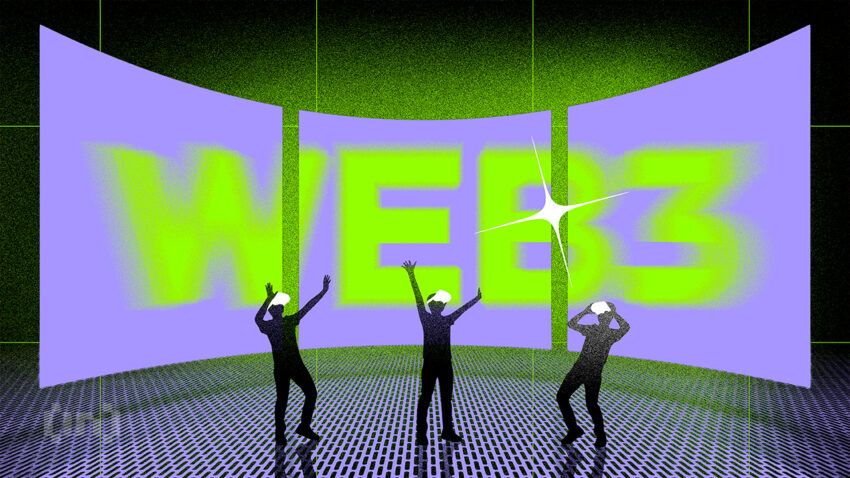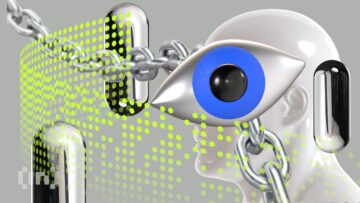The landscape of public goods funding is undergoing a profound transformation. Driven by the rise of blockchain technology and decentralized ecosystems, grant programs in the web3 space fill a void that governments and venture funds have chosen not to prioritize. So, is there a universal grant structure to suit all funding needs? What challenges do grant-seeking project managers face? Here’s what you need to know about web3 grants and funding the virtuous innovation cycle.
What are web3 grants?

Web3 grants are non-dilutive, meaning a given project can get the funding it needs without giving away any ownership. This ultimately incentivizes the participation and growth of said ecosystem. Using a variety of funding tools cultivated by the crypto community at large, ecosystem leaders and grants program managers (PMs), in particular, can supercharge their growth efforts.
Quadratic funding (QF) is the most promising experimental framework available. QF pools together small donations from multiple people and matches them with a larger amount of funding from a central fund. However, other options exist. Depending on the specific needs of the program, PMs can leverage prospective grants to discover new initiatives to fund within their ecosystem, a request for proposal (RFP) for focused problem-solving, retroactive grants for contributions already made, or research grants for innovation.
Is there a universal grant structure?

Grant programs are not one-size-fits-all. Different grant approaches serve needs, offering project managers a range of tools to develop their projects. The dynamism in structure is most obvious in web3, given that crypto communities are known for their culture of experimentation and decentralization.
These communities are constantly trying out new ideas and governance models. This has bred a culture that has produced incredible innovations. Open-source software is the secret sauce, functioning as a digital-age public good. The added benefit of transparency provided by blockchain technology and the instantaneous, low-fee environment makes it simple to run web3 grant experiments.
The lack of a universal grant structure creates challenges for programs, particularly web3 communities attempting to allocate their shared resources democratically and transparently. Elinor Ostrom, a Nobel Prize-winning economist, dedicated her career to studying how communities manage common resources. Her work should be of particular interest to web3 PMs, as it presents valuable insights for designing decentralized funding models.
Ostrom’s principles can be boiled down to prioritizing local knowledge, cooperation, and self-governance in managing common resources effectively and sustainably. By applying these, PMs can foster more sustainable and community-driven approaches to funding public goods.
Unique challenges for web3 project managers
PMs in the crypto world have to navigate uncharted waters. They’re not just building products; they’re building ecosystems. In many cases, they’re making decisions collectively with token holders spread around the world. It’s a challenging but exciting role that requires a deep understanding of both technology and human behavior.
PMs are generally beholden to stakeholder demands, market movements, resource allocation, the user experience, and tracking product performance. Web3 PMs have the added stress of community engagement, planning for interoperability, ensuring regulatory compliance, as well as addressing privacy concerns.
While there is no panacea for anticipating market movements, engaging the stakeholders in your community can help navigate any turbulence. Addressing these challenges and having an open feedback loop with the community on areas for improvement helps prioritize important features. This strategy worked for Gitcoin, leading to the development of Grants Stack.
One of the more nuanced issues facing web3 PMs that want to secure quadratic funding or voting specifically is the prevalence of Sybil attacks and airdrop farming. Sybil attacks usually involve the impersonation of multiple agents to manipulate outcomes. A detrimental by-product of Sybil attacks is the artificial inflation of unique active wallets on a network.
Airdrop farming is somewhat connected, often involving multiple wallet addresses to game the system and acquire more tokens or rewards. This practice is extremely damaging to web3 communities and was encountered in the first Gitcoin Citizens Round. Airdrop farming disenfranchises dedicated community members and can be a long-term reputation risk.
Balancing intentions and positioning
One essential lesson is the importance of aligning the intentions of a grant program with its positioning. During the crypto boom, many organizations rushed to launch grant programs, often with unclear goals. It’s crucial to define the desired outcomes clearly and name the program accordingly.
Programs should tailor their approach to their specific goals. Open source ideas and projects, whether they are community or organization-led, warrant their own distinct funding mechanisms. Whether it’s ecosystem support, growth funding, or something else, a clear mission simplifies decision-making, metrics, and marketing strategies.
Many will not be aware of the various funding avenues available and how to map these to the appropriate stage of development, be that early on, during the growth phase, or at a mature stage. The funding mechanism will also be affected by how important decentralization is to the organization or community, so as with anything, finding the right balance is the key.
Planning and systemizing impact reporting
Measuring the impact of web3 grant programs is vital for evaluating their effectiveness. Both quantitative and qualitative data analysis are needed to measure impact holistically, especially in the early stages of implementation.
For example, builders advancing the greater good and contributing to an ethical blockchain network may want to use the UN’s Sustainable Development Goals (SDGs) as a North Star. This can help amplify the socially responsible aspects of web3 funding initiatives. Relying solely on rubrics can limit program focus, so it’s crucial to balance this with the broader mission, ensuring a comprehensive perspective.
Impactful reporting goes beyond numbers. Credible messengers, audience-specific visuals, and relatable stories help inform your community. Everyone appreciates being in the know, and successful impact reporting will do just that — while also displaying your progress to others.
The state of web3 grants
Active and sunset grant programs, including Algorand, Ethereum, NEAR, Solana, and Gitcoin, have collectively issued over half a billion dollars across 5,900 grants as of August 2023, as per data from the State of Web3 Grants Report. In this era of rapid change, adaptability and modular systems are paramount to address pressing global challenges effectively. Instead of chasing moonshots, grant programs should provide ongoing support beyond issuing grants. This includes connecting grantees with resources, communities, and other grantees.
Support systems can vary based on the program’s goals and the needs of grantees. Exploration and adaptation of public goods funding must continue to leverage the power of blockchain and decentralized communities to address global challenges with agility and innovation.
Frequently asked questions
What are some key funding mechanisms for running a grants round?
How do I decide which funding mechanism to use for my grants round?
How can I ensure transparency and accountability in my grants round?
How can I assess the impact of grants awarded during a round?
What are the best practices for running a successful grants round?
About the author
Meg Lister is the Product Lead for Gitcoin Grants Stack. Meg’s career journey has seen her transition from traditional tech to the dynamic and ever-evolving world of blockchain and web3. With a strong background in SaaS and ad tech, she brings a wealth of experience that extends beyond the blockchain world. Meg’s experiences have provided valuable insights that she now leverages to drive innovation in the crypto ecosystem, where she is actively engaged across the DAO landscape. Beyond her professional pursuits, Meg shares her space with two feline companions, a faithful canine friend, and a towering stack of books that eagerly await her attention.
Disclaimer
In line with the Trust Project guidelines, the educational content on this website is offered in good faith and for general information purposes only. BeInCrypto prioritizes providing high-quality information, taking the time to research and create informative content for readers. While partners may reward the company with commissions for placements in articles, these commissions do not influence the unbiased, honest, and helpful content creation process. Any action taken by the reader based on this information is strictly at their own risk. Please note that our Terms and Conditions, Privacy Policy, and Disclaimers have been updated.




